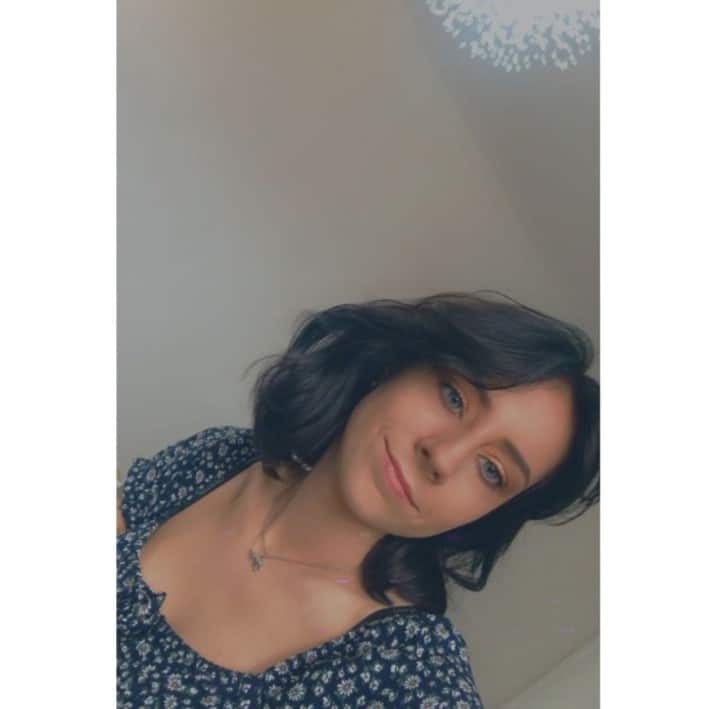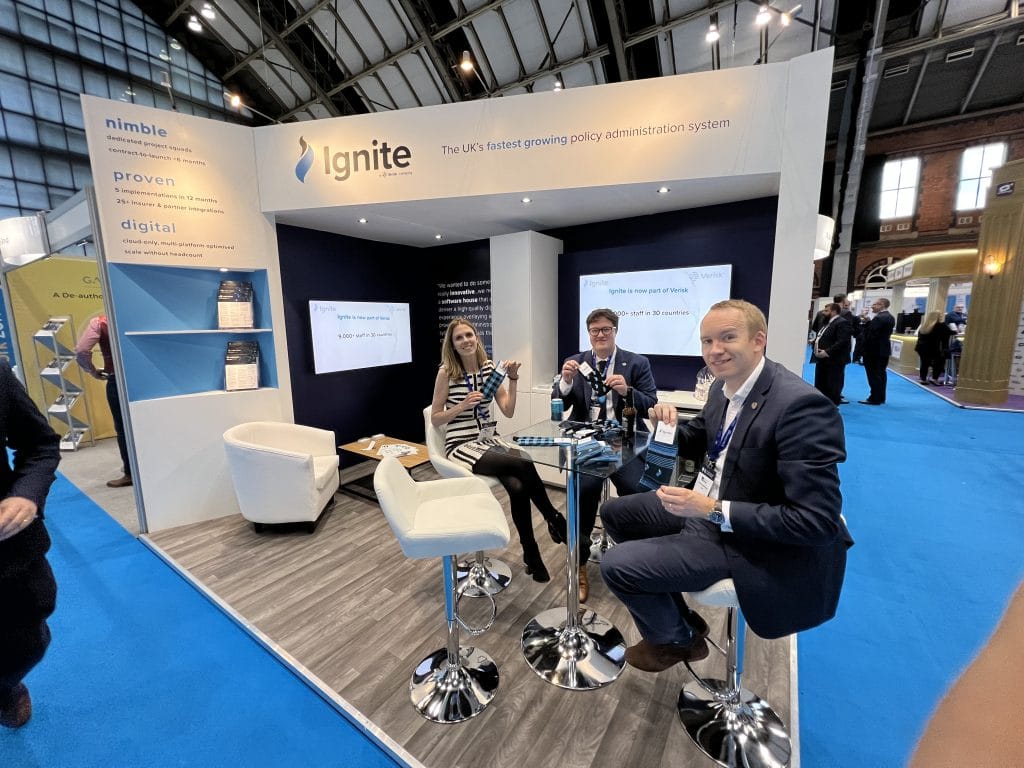Blog
Brokers launching 2nd brands
15 December 2023
What’s behind the wave of brokers setting up second brands?
Read the full article in Insurance Business Magazine here
2023 has been a busy year for the insurance broking sector and the companies that work to support the health and sustainability of this market. Between regulatory pressures, the acceleration of generative AI as both a point of discussion and a point of differentiation, and the troublesome economic conditions impacting providers and insureds alike, ‘what next?’ was the question of the mind of so much of the market this year.
In the midst of so much upheaval, it has been interesting to see how brokers have pivoted to meet these challenges head-on, and one key directional shift seen by Toby MacLachlan (pictured), CEO of Ignite – a Verisk business – has been the increased number of brokers setting up second brands. There was a small wave of brokers that set up second brands at the start of last year due to the fair pricing regulations, he said, and he expects to see more of this activity going forward, albeit for different reasons.
What’s behind the move towards second brands?
“Lots of larger brokers are stuck on legacy platforms,” he said. “Re-platforming presents a business risk/interruption that is a major obstacle to innovation. So, lots of larger brokers are considering/doing second brands. This allows them to use the latest technology, like Ignite, without the risk of data transfer and the headache of full staff retraining.
“They can start with a single product and do interesting things with it (like variable policy terms, multi-vehicle, self-service etc) that would be all but impossible on their main platform. And they can then run both side by side, share learnings and best practice, and invest where appropriate.”
Identifying some of the key factors at play behind this trend, MacLachlan noted that brokers are keen to innovate. They’re entrepreneurial and full of ideas, he said, and it’s important to recognise that brokers have no lack of willingness or funding to innovate. Rather, they are held back by legacy tech that is slow and expensive to manipulate.
“The key factor behind the wave of second brands is not just fair pricing, it’s a desire to try new things and keep up with those that are innovating,” he said. “Another reason brokers are setting up second brands is to do with business risk. The FCA is considering regulating key software systems like policy admin platforms.
“The risk that these big, legacy, core platforms represent has come into the limelight. Much-publicised outages from other software houses are just one example. In an age of regular cyberattacks, all systems are potentially vulnerable. Having a second brand on a second system mitigates risk to brokers that, if their core system goes down, really have no disaster recovery strategy in place at all.”
What impact are these second brands having on the market?
What’s been fascinating to see is the knock-on effect the setting up of second brands is having when it comes to fostering innovation among larger brokers. Second brands are an ideal place to innovate, he said. They tend to be smaller and nimbler than the core brand and are therefore ideal forums for testing changes and new ideas.
With that in mind, MacLachlan also highlighted the implication this trend is having to help ensure these brokers are meeting fair pricing regulations. Regulatory challenges tend to be most challenging when there is poor access to data or automation, he said, while second brands, with a smaller back book, are easier to adapt to regulatory change.
As to the impact this move towards brokers establishing second brands is having on the customers on the other side of the insurance value chain, MacLachlan noted that the end insureds “undoubtedly” benefit from second brands. New products tend to be digitally enabled, he said, giving customers more choice, and lower overheads, giving customers better priced policies.
What’s next for Ignite?
2023 was a year of acceleration for Ignite itself, seeing the insurance software house launch an accelerator programme to drive innovation in insurance broking and be selected by Hagerty Insurance Services (Hagerty) as its new broking system provider. With his attention turned to 2024, MacLachlan said he expects AI to inevitably dominate discussions and headlines next year.
“There are clear use cases for claims and pricing, but also more subtle ones in broking administration,” he said. “Brokers’ staff are essentially training people interacting with data. This is something that generative AI does well, and should be harnessed as such. Ignite launched its AI Layer technology in 2023 and will be publicising the positive real-world impacts and use cases of this in 2024. “
Unleash the Power of AI in Insurance: How to Drive Efficiency and Growth
5 July 2023
There’s lots written about AI (even in insurance!) these days, but how many brokers are actually using it? Very few, if any. This blog is about one-way brokers can actually (actually) make use of AI in a real-world way.
Why would brokers want to use AI? Commercially speaking, brokers want to do two things: drive revenues up and costs down. Ideally, AI should do both of these things.
The Aim
The aim of Ignite’s new data-retrieval ‘AI Layer’ tool is to create an amazing data-engaged call centre assistant and chatbot that saves brokers’ staff and their customers time.
This ‘AI Layer’ will answer customer queries without the pesky need to actually go find the data and type out a response. If this works it will:
- Improve out-of-hours customer interactions so customers are happier, more likely to recommend and renew
- Reduce admin time per policy, either through more efficient call centre work or customers self-serving, leading to lower staff requirements and reduced overheads
- Create a feedback loop into systems and products so that they continuously improve
The Use Case
Take a given broker with 100k policyholders (although it could be 10k or 1m). They currently have 6 staff (this is a real-life use case).
They want to quadruple their policy count in the next 2-3 years.

Do they want to quadruple their staff count? No, they want to halve it. Doing so would equate to a saving of over £0.5m a year in staff costs alone.

How do we achieve that? A good start is by allowing customers to do more themselves on a self-service portal, but… we already do that. They can already do all MTAs, cancellations, renewals, direct debits, etc. Those that cannot help themselves resort to live chat agents.
If we can handle more customers at once then we need fewer agents rather than more. To do that we need to provide responses for agents so they don’t have to spend time digging around for data and typing answers.
A bit of experience
In 2021 Ignite launched an AI (NLP and ML) Chatbot to answer common customer queries (such as how to change direct debit dates, or how to make an MTA). In 2022 we processed nearly 100,000 chats with 1,000s of customers.
But this chatbot was not connected to the customer database, so even though it answers 50% of (FAQ-style) queries pretty well, the second 50% was going to be a fair bit harder.
Ignite’s AI Layer
When customers have a query we send their (typed) query to our AI Layer.
Our aim is to have their query answered by AI. To do this we need to:
- Know the customer
- Not breach GDPR
- Provide useful responses

Ignite’s AI layer is doing three things:
- Fetching as much relevant customer and policy data as possible
- Obfuscating the data so we’re not breaching GDPR guidelines
- Re-formating that data into structured prompting templates so the AI responds usefully
What does it actually do?
It answers questions, quickly and accurately.
For example, if a customer asks “What are my excesses?” it will immediately (2-5 seconds typically) answer “Your voluntary excess is £x and your compulsory excess is £y making a total excess of £x+y” (where x and y are the right numbers based on the policy record). Or if asked, “Am I covered for driving other cars?” it will answer “yes” or “no”. In each case the live chat or call centre operative doesn’t need to either open the customer record or type the reply.
And if a customer asks: “how can I save money on my insurance?” it will answer “I’m afraid I don’t have data available to answer that question” (rather than giving an ultra-polite greatest hits of legal-or-otherwise hints from the wider internet which is what ChatGPT would do).
How does it do this?
Ignite’s AI Layer works in a similar way to ChatGPT, except that instead of just asking the question, we give the engine a whole lot of pretext/context so it can better answer the question. Things like policy dates, costs, cover details, etc.
How do brokers use this?
This tool is already available to brokers using the Ignite policy administration platform. It will be available as a plugin to other/legacy PAS systems in the coming months.
If you’d like to see a demo, hear more about this project, or find out when it becomes widely available, get in touch.
Insurance 2023
3 February 2023
Industry trends in 2023
2022 was an interesting year in insurance. Kicked off by the ‘price walking’ bombshell on Jan 1st we saw lots of market churn, aggregator volumes down, and frenetic rate resetting. Then the domino effect of Putin > energy prices > mini-budgets > (claims) inflation… cue more pricing faff. What will 2022 loss ratios look like? All over the place most likely. And on the tech side of the equation, all tech stocks (and tech investments) took an Olympic finals-sized dive. Wages up, investment down, rates everywhere… messy. (Thankfully Ignite is fine)
The end of digital transformation
One of the over-hammered phrases from 2022 was ‘digital transformation’. It gets touted by all the tech firms and larded onto every press release and industry feature piece going. Well, I’m going to draw a line in the sand and say that digital transformation is now ‘done’. Lots of brokers have already done it, are finally doing it after years of procrastination, or won’t do it (bless ’em). I don’t want to overblow the trumpet but all Ignite brokers are digitally transformed: they’re 100% cloud, offer customer digital self-service where required, and have low-cost bases through high automation. 2023 will be about digital transformation for some, but I’m most excited about 2023 being the year of product development. This is something that rarely happens when digital transformation is happening – the focus is usually on digitising what’s already there. Now (by proclamation) the transformation is done… roll on product innovation.
Exciting stuff
So what product development will we see? Here are just a few things we’re already working on that will be fun:
- Long-term policies. Why stop at 1 year? With inflation riding high at 10%, a 3-year car or home policy is suddenly quite attractive. In general flexible policy terms will become the norm.
- IoT. Cars and homes (and even pets) are connected these days. We’ll see new products informed by data dissemination that others can’t compete with. All cars made after 2019 (and many before) are ‘connected’ and their live data accessible to insurers. This has been talked about for a long time but it’s becoming cheap and will therefore soon hit the mainstream.
- Price optimisation. AI has come to town and it’s here to stay. If you don’t believe me you’ve not asked chatGPT to write you a love poem about underwriting. This (AI not the poem) will make pricing so much more dynamic and render massive hoarded data sets increasingly redundant. Market benchmarking, live pricing data and AI-driven product flexibility will become the standard.
The end of insurtech
Another word that’s going to be increasingly problematic is Insurtech. With the macro-economic climate being what it is (rubbish) there will be a fair few insurtechs falling by the wayside. However quietly they do it the brand will still be tarnished. Years of outlandish claims (we’ll get you live in 24 hours/2 weeks/pick your poison) and insurer hostility haven’t helped, and so 2023 may well be the year we see companies distance themselves from the term. That’s why we’ve drawn another line in the sane: Ignite, now 10 years old, is a software house, not an insurtech.
What else is not happening in 2023?
Finally here are some things that I don’t believe are going to disrupt anything this year.
- Embedded insurance. It’s just not happening. The idea is good (insurance at the point of product purchase), but the tech and capacity and investment required to make it really work are just not justified by the volumes available. Expect one or two nice examples but no stampede.
- Never-ending consolidation. The consolidators have spent a merry few years buying up every Tom, Dick and Hastings at inflated prices. It’s fine to have £1bn of debt when the base rate is 0.25% but at 4%+… less so. Might we see a collapse or two and a hoovering up of the pieces? Maybe not right away, but if things drag on as they are then who knows…
- Low-code/no-code. I’ve yet to see a really impressive system for insurance that is low- or no-code (or at least one that doesn’t require plenty of training, have severe limitations that require coding, and which can’t be messed up in 2 minutes by an incompetent operator). And anyway, these days you just ask ChatGPT to write you code for what you need. Now that’s real no code 🙂
And finally, what of Amazon insurance? Their current aggregator-lite home insurance site will soon be joined by motor. Will there be an upgrade to the current system/model? They’ve just made 10,000+ redundancies so it remains to be seen whether this newly-launched insurance offering will snowball or mothball…
Scale, sizeable pizzas, and learning to trust
15 September 2022
1 year into Verisk…
Since becoming part of Verisk a year ago this month, Ignite has grown and grown up. Headcount has grown 64%, recurring revenue is up 76%, and we’ve brought on some big new clients.
One of the challenges of scaling up is to maintain a company culture and knowledge base even as so many new people join. To achieve this we’ve created lots of small teams (up to 6 people) that operate independently. This means we can slot new people into teams and they get lots of face time with experienced hands, and knowledge is passed more intensively.
It turns out this idea isn’t new. Brooks’ Law states that “adding manpower to a [late] software project makes it later”. And everyone knows anecdotally that 3 people working together are way more efficient than 10 people working together. The diagram here illustrates why.

In our Ignite teams of 6 people, there are only 15 lines of connection, a manageable number for day-to-day interactions. Add another 6 people and those 15 lines explode to 66 lines: people don’t talk enough within the team (there just isn’t time) and knowledge is lost.
Not only did Fred Brooks get there before me (in 1975 in fact) but so did Jeff Bezos.
The rule that this (seemingly parsimonious) billionaire espouses is that no team should be so large that it cannot be fed by two pizzas. It’s the same thing really: teams are small, agile and empowered to make decisions. Micro-management is the enemy of progress.
And what do all these maxims boil down to? Trust.
In a small company, you know every one of your staff so you trust them. In a larger company, you don’t know everyone, so it’s harder to trust them (that they’re working hard, making good decisions and doing the right thing). The temptation is to gather as much data as possible, like timesheets and reports, create committees, etc. But this is just micro-management by stealth.
If you trust your core team, then trust the people they trust. They’ll thank you for the show of faith, and the time they get back by not having to do endless time reporting or memos.
And if your team isn’t working hard, isn’t making good decisions and you don’t know about it… well, you’re stuffed anyway.
MGAA 2022
6 July 2022
What a difference a year makes. MGAA 2021 was mired by covid, masks, and low attendance. 2022 was buzzing, with a notable step up in attendance especially from more direct channel players and providers. The agenda was geared around optimism and harnessing the current cyclical peak in interest in MGAs.
BIBA vs MGAA
Ignite has always felt BIBA was it’s home-ground conference, given we licence a policy administration platform. This year the MGAA felt a lot like home given how many MGAs are going direct and harnessing self-service PAS solutions to go to market B2C with low cost overheads rather than via brokers.
Verisk
Verisk – our parent company – were also exhibiting. As usual the event was an opportunity to learn more about the breadth of products within group and the surprising number of MGAs and carriers already using Verisk products and data sets.
Insurtech
There was the usual proliferation of ‘insurtech’ offerings. It again made me think that Ignite is no longer an insurtech, and reinforced in my mind that being specialist in certain product types is critical for insurtechs. Of course it’s possible to move sideways sometimes, but the effort is high and the timescales long. It has taken Ignite a good 5 years to become a market leader in providing a policy admin system for motor products for UK brokers; building out pet and home have taken almost as long again. The idea of breaking into something totally new like SME is chilling!
MGA optimism
Another recurring theme of the conference was optimism. MGAs are cyclically popular. Right now they’re on the rise again. There are two reasons for this:
1. brokers want more agile partners as insurers have become bogged down with recent regulation and pricing reforms
2. there are really good B2C self-service technology solutions out there these days which means MGAs can go direct without needing a massive headcount or brokers.
These two points are in addition to the perennial benefits of MGAs in terms of better ratios and specialism that insurers lack.
All in all the conference was a great success – credit to the organisers. Ignite will certainly now becoming a member and exhibiting in 2023…

Employee Spotlight: Amy Easterbrook
20 June 2022
AMY EASTERBROOK
Data Analyst Apprentice
Amy is an Apprentice Data Analyst here at Ignite!
As one of our ‘newbies,’ we’ve asked Amy to answer a few questions for our latest Employee Spotlight piece…
What three words would you use to describe Ignite?
In three words I would describe Ignite as innovative, agile and supportive.
What are you most looking forward to?
In my role at Ignite, I am most looking forward to when I can dive into the data analytics side of the role with confidence.
What drew you to Ignite?
I was drawn to Ignite because of their innovation days and the chance to learn more about the data sector, I felt that the role was perfectly suited for that.
In my short time at Ignite, I have already learned so much.
What do you hope to achieve in the next 2-5 years at Ignite?
In the next few years at Ignite, I hope to be able to learn a great deal more and be able to analyse/report more complex datasets.
Get to know more Ignite newbies in our Employee Spotlight Series:
Christian Wright, Head of Business Development
Matt Snape, Head of Sales and Marketing
Steven McManus, Apprentice Software Engineer
Interested in an apprenticeship at Ignite? Click here to find out more.
BIBA2022 playback
13 May 2022
BIBA was back with a smile this week after a 2 year absence.
There was an overriding vibe of goodwill and camaraderie. Far from lockdown causing introversion, the collective brought out the best in people. The willingness to talk, look forwards, and do business was palpable. It was as though 2 years had been spent in a cave and we all needed to make up for lost time with interactivity and ideas.
The Insurers
The insurers were out in force, manning sprawling stands with baristas and intimate meeting areas. There was a pleasing decline in the quantity of useless plastic tat being larded into the obligatory tote bags. The stand designs were largely elegant and pleasing on the eye, with the ends of the spectrum being bookended by the two As: Allianz’s staid but environmentally worthy cardboard setup, and Ardonagh’s chandelier, leather sofas and a general sense of the old-world.
Socks
I stayed on the Ignite stand for almost all of the conference, such was the footfall and general interest. Socks were our only give-away and it turned out (much to my relief) that 500 pairs was just about the perfect number. It certainly brought a smile to see a couple of punters flashing blue-plaid ankles at us as they passed by on day two. Nice to think of those socks winking up at people from their sock drawer for many mornings to come.
Drinks
Almost all the drinks we had labelled in our fridge for people we wanted to see were claimed. Far from just seeing familiar faces though there was a surprising number of new enquiries. I had thought this conference would be mainly about brand awareness for Ignite, but in the end we’ve got 8-10 genuinely interested parties looking for new policy admin systems. Worth saying also that there was a delightful lack of new competition in our area of expertise, and an aching void of innovation from the big legacy software houses.
I didn’t make it to a single break-out area or talk so I can’t usefully comment on those, except to say the lineup of speakers seemed excellent.
BIBA vs Expo?
Having been to Broker Expo in November I can confidently say that BIBA still has the upper hand. We’ll certainly be back next year, hopefully more closely aligned with our colleagues on the Verisk stand who were showcasing some seriously good stuff. More on that another time… for now, enjoy your socks if you got some, and thanks for the good times.
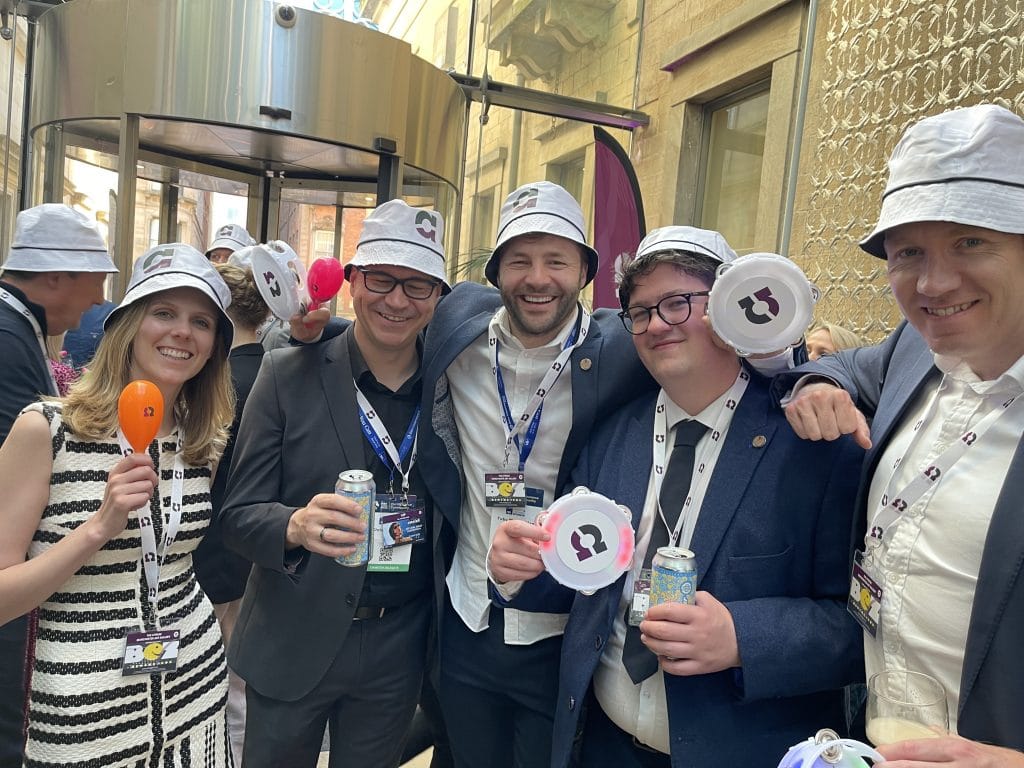
Prepping for BIBA2022
31 March 2022
Ignite will be exhibiting at BIBA this year alongside 100+ other companies. One of the main benefits of BIBA is speaking to many familiar faces, but we have a stand too and we want unfamiliar faces to get to know about Ignite and our team.
To that end I’ve just spent the day with various people in my team trying to distil the essence of Ignite’s company and product suite into a few eye-catching strap-lines and graphics.
This blog is a bit of an insight into the (slightly mad) process of putting together ideas for a stand at BIBA.
We already a stand layout design done, so this session was all about the content.
Here’s how it went down:
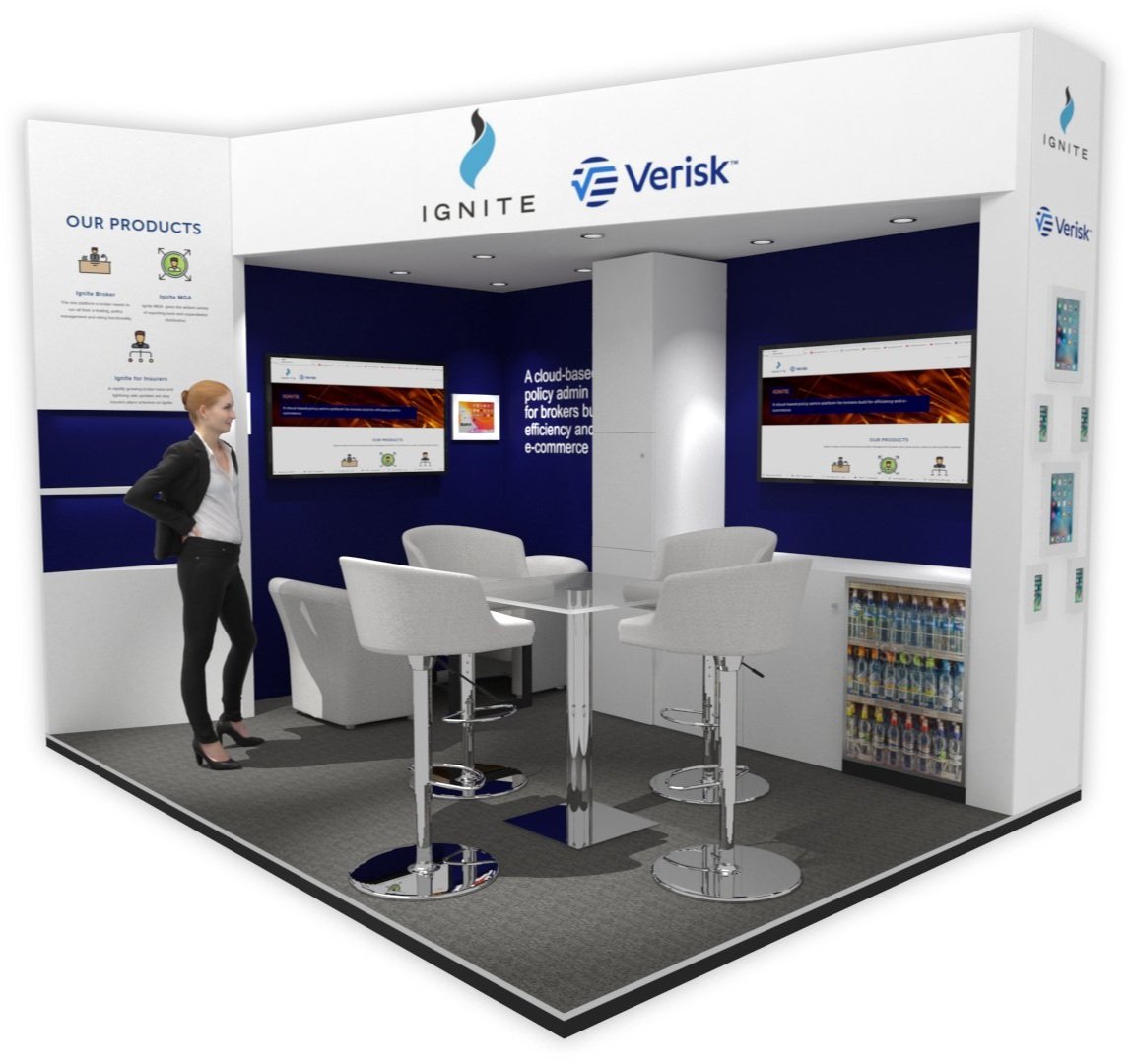
Questions
Broadly we considered these questions that people passing the Ignite stand might have:
- Who on earth are these Ignite people?
- What are they trying to sell me?
- Why would I ever want to buy it?
- What are they like as a company?
Themes
Addressing these questions in order we therefore thought we ought to make the themes of our messaging:
- What is Ignite? At a very high level: a fast-growing software house with increasing pedigree, disrupting legacy platforms and backed by the (enormous) Verisk group (that no-one has heard of)
- What does Ignite sell: we licence a policy management system, but that makes it sound so bland and average. Ignite’s uniqueness is that is it has good reliable tech (not the very latest but certainly not legacy) along with experience in delivering systems to personal lines brokers (which means lots of wrinkles ironed out and lots of critical integrations done). We’re both youthfully agile (8 years old) and old enough (8 years old) to have cut our teeth on some large projects and know our business. Someone mentioned the tagline: “big enough to deliver, small enough to care” – trite but we’re current that sort of size.
- Why choose Ignite: sure, we’re quick to market, end-to-end, low-code, reasonably priced, and agile – but so are all the other insurtechs out there. We’re also experienced (used by dozens of personal lines brokers) and process millions of quotes and millions in premium each month – but so do the legacy software houses. So we need a way of illustrating that we’re both innovative and experienced, because both are critical.
- What are we like as a company: agile but not naive; knowledgeable but not boring/corporate. This needs to come across in our language, the boldness of our statements, the openness of our demos, the honesty of what is achievable and what is not. And a bit of irreverence because life’s not fun if you take yourself too seriously.
Don’t mention the themes!
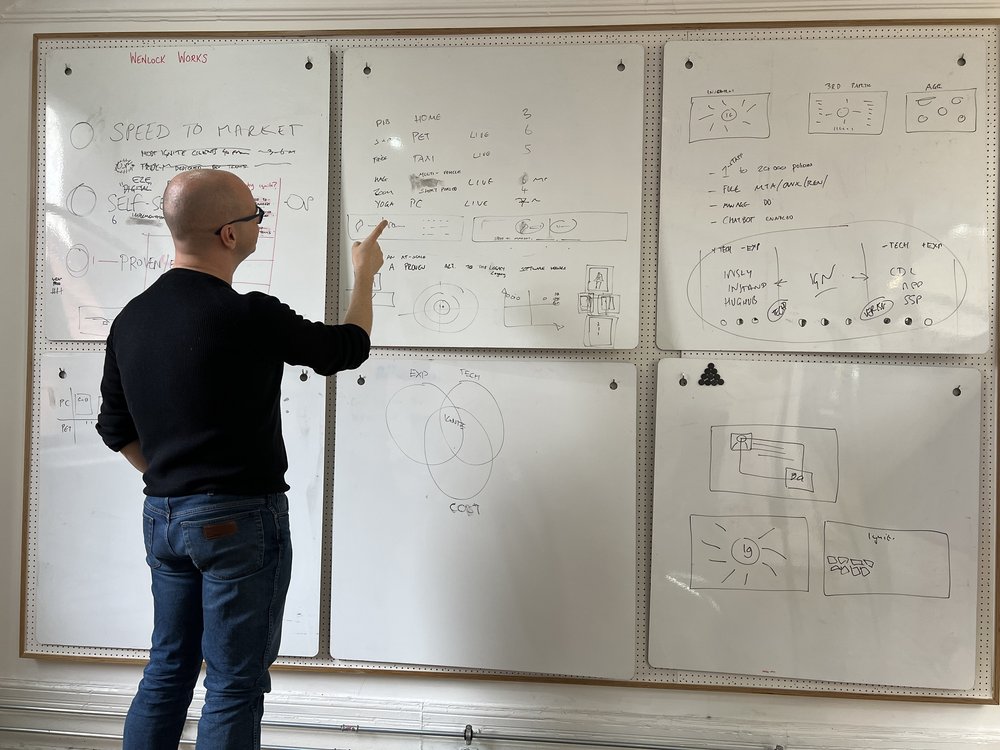
So these were our themes but, counterintuitively, we didn’t want to mention any of them. We wanted the reality – our systems, people, clients – to act as evidence of these things. We wanted people to infer these themes and ideas from what we were showing them. The content could not just say we are quick-to-market, experienced, or innovative. The content has to showcase speed, experience and innovation. It has to provide real-life implementation timescales, live integrations with enrichment and aggregators and AI, and visuals of the innovative chatbots, pricing tools, and customer journeys. If we have to tell people we’re innovative, that suggests we can’t show them we are.
Output
With this in mind we decided to fill the three key stand areas we have – top banner / side board / screens – with three key themes:
- What is Ignite: the UK’s fastest growing software house. This felt bold but has the advantages of being to the point, and true (by most metrics we could think of).
- What makes Ignite different: the combination of tech + experience – on top of all the tech you’d expect, we bring speed to market and enterprise experience
- Why buy it: visuals – the system should speak for itself. Put up on the screens the beautiful customer digital journeys, the chatbots, the self-service portal, and also the back office, the MI suite, etc. Put up case studies with video content and actual metrics of success. This feels open, exciting, refreshing, proud, and different.
This might seem self-evident, but it took us a good 6 hours (including burrito break) to mastermind.
Visuals
Here are some early visuals that we were working with:
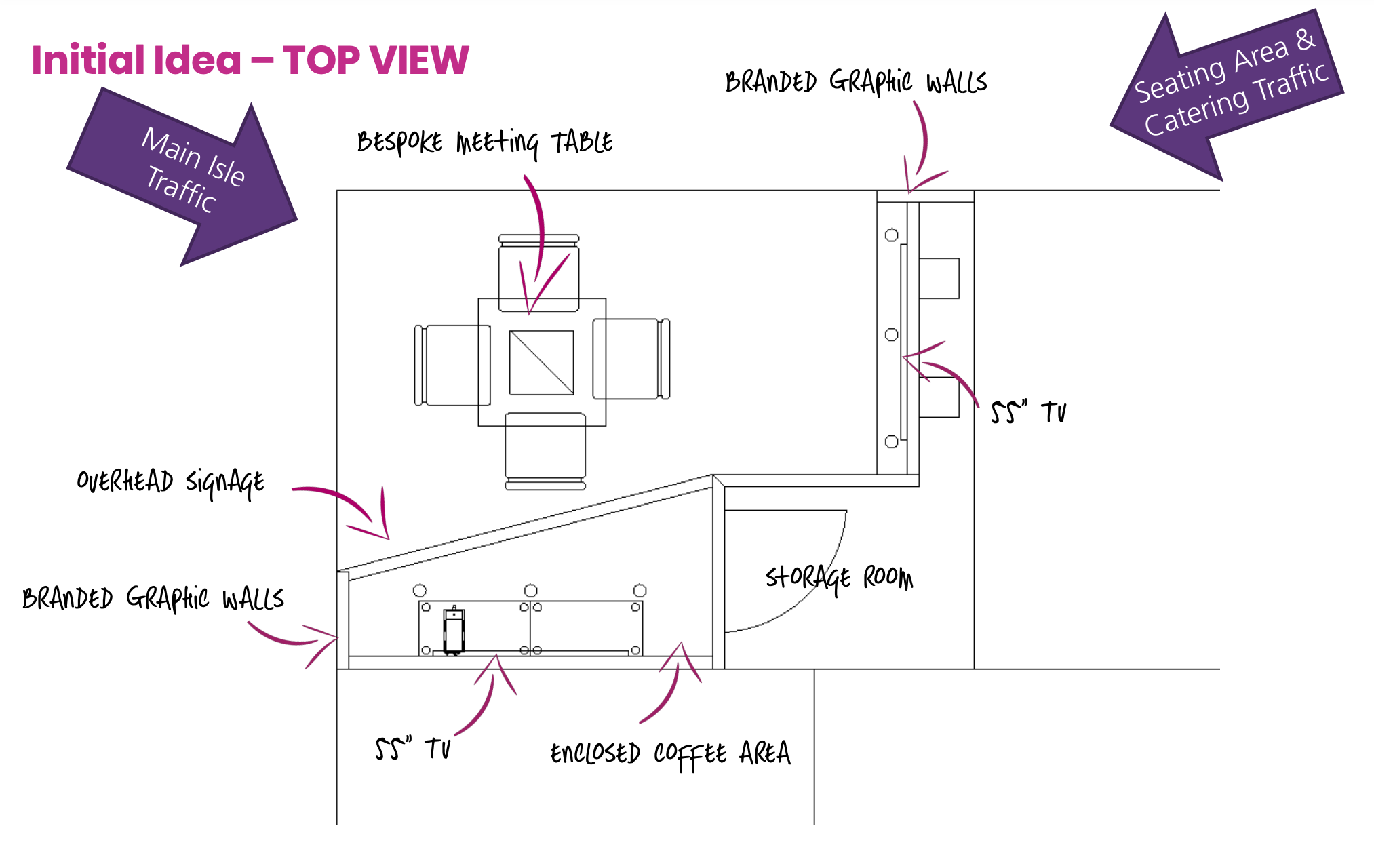
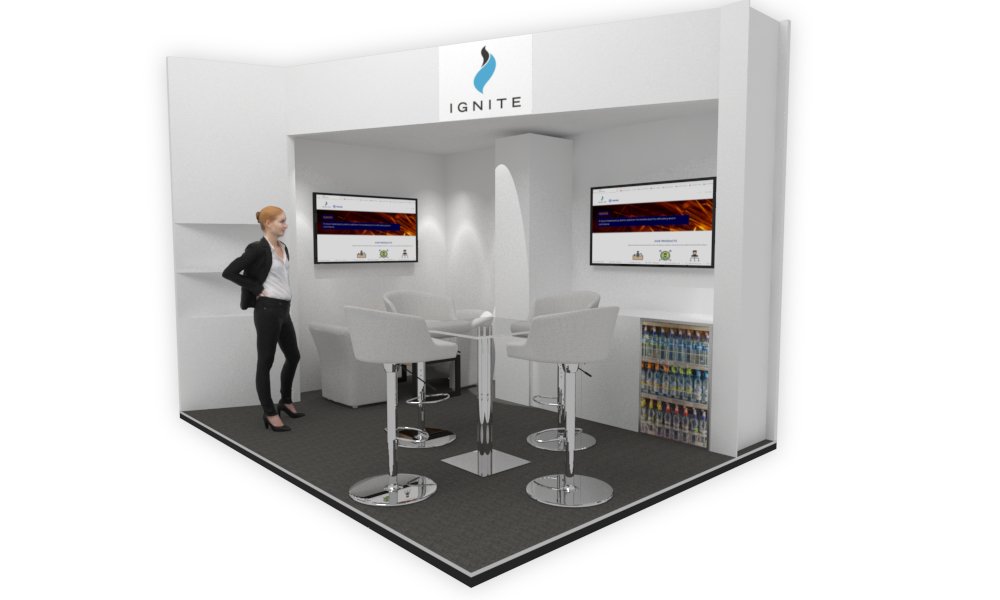
Employee Spotlight: Christian Wright
29 March 2022
CHRISTIAN WRIGHT
Head of Business Development at Ignite
Christian joined Ignite this month as Head of Business Development, tasked with seeking new partner and client opportunities, as well creating and advocating innovative new products.
Having spent over 20 years at CDL as an insurer liaison, product manager and business development lead, Christian knows the insurance and technology business well. To help us get to know Christian a little bit better we asked him to answer a few questions…
What are you most looking forward to with regards to your new role at Ignite?
Working with a small, highly skilled & capable team with a proven track record of seamless, speedy delivery.
What difference do you hope to make?
I intend to share my experiences of dealing with large scale Brokers and Insurers, to help deliver the remarkable Ignite platform to a much broader audience.
What drew you to Ignite?
Initially, Toby [Ignite’s affable MD], right from our first conversation. After that, it was the system. On top of that, just to add icing to the cake; it was all the people I’ve met so far. Friendly, knowledgeable and dedicated.
3 words you would use to describe Ignite
Innovative. Exciting. Efficient.
What do you hope to achieve in the next 2-5 years at Ignite?
Secure platform sales to multiple new clients, extend existing industry relationships and grow the product portfolio to attract a broader range of long term partnerships.
Tell us a random fact about yourself (that you’re willing to share)
I started keeping beer bottle caps as I’d planned to build a mosaic in resin from them. Several thousand caps and a few house moves later, I’m still planning it…

If you could do another job for just one day, what would it be?
MI6 chief
Describe what you were like at age 10
Painfully shy, but very inquisitive
If given a chance, who would you like to be for a day?
Sir Alex Ferguson (in his prime!)
Do you have a favourite quote?
Nope – I prefer my own moments of random profundity!
Do you have a favourite newspaper, publication, blog?
I read a broad range of media sources, but I particularly like sites like aeon.co
How do you define success?
Tricky question! Ultimately, success to me is achieving a planned and (relatively) expected outcome, whether professionally or personally, that allows me to feel a sense of integrity and fulfilment.
If you could only drink one beer for the rest of your life, what would it be?
Another hard one to answer! But, I’ve always been a Guinness man, so let’s go with that.
People would be surprised if they knew…
Not sure there is anything else I’d like to share in the public eye.
Three words to best describe you
Loyal. Intelligent. Driven.
What are three career lessons you’ve learned thus far?
Believe in your own narrative, but not to the extent where you ignore those of others. Nothing gets built without either a little or a lot of help, and the relationships we forge are paramount.
What are your hopes for our industry?
Further modernisation and alignment of outmoded and unwieldy processes. Sensible regulatory changes to help customers make informed choices. Harmonising personal insurable risk coverages under easy-to-read and easy-to-manage platforms for the consumer, that are still easy-to-administer for Brokers and Insurers.
Connect with Christian on LinkedIn: https://www.linkedin.com/in/christian-wright-uk/
R&D 2022
10 February 2022
At Ignite we spend over 50% of all our time doing R&D for our clients and core system. Here is a run-down of some of the projects we’ll be working on in 2022:
Configurable alerts
It’s all very well having snazzy dashboards (as we do) so that our clients can see all their live KPIs. But you can’t be glued to that screen and still do your job.
That’s why in 2022 we are creating a series of configurable alerts based on key data metrics so our clients get notifications when numbers and ratios important to them change.
New Call Centre UI
The current Ignite back-office interface is pretty pretty but we are always looking for how to make things easier and slicker. Will be reviewing both the UI and the UX, i.e. looking at the colours, fonts and buttons, but also the accessibility of key system areas, and how to make system use as intuitive as possible. Here is a sneak peek of the early designs…
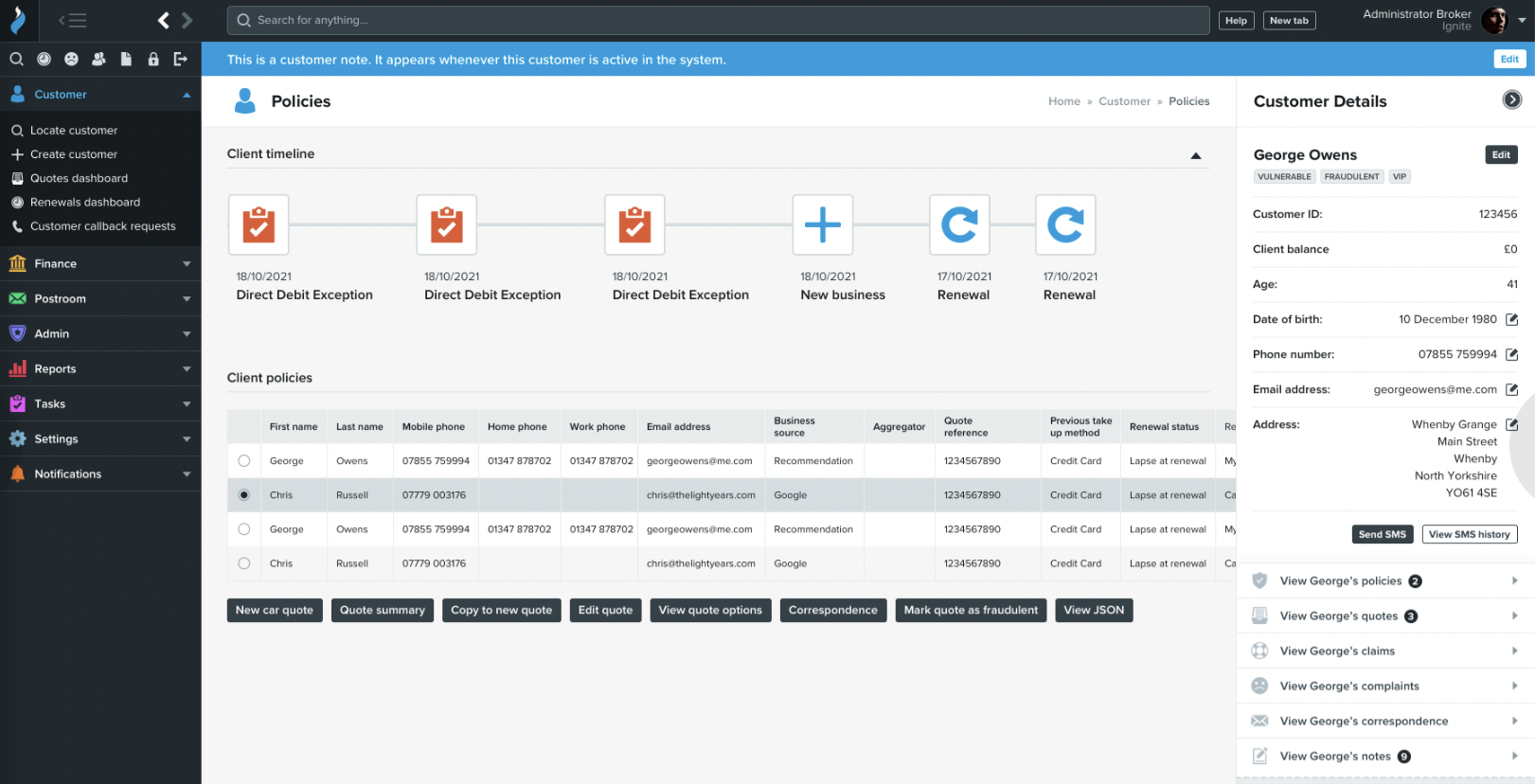
No-code question set builder
Some Ignite products (i.e. question sets) come pre-packed, like motor, home, and pet. There might be small variations which we allow but the structure is largely determined by the price comparison websites which drive the majority of traffic to these lines of business. There are of course other products which Ignite also supports. To aid the speedy development and control of these non-standard products (e.g. gadgets, cycle, gap, SME, et cetera) ignite will be expanding on our existing question set builder.
At present brokers can self configure their own products including all questions and document templates. The 2022 iteration of the question set builder will auto generate API endpoints for easy integration to third-party rating or distribution services, allow for more complex questions that design, and feature a more curated database structure.
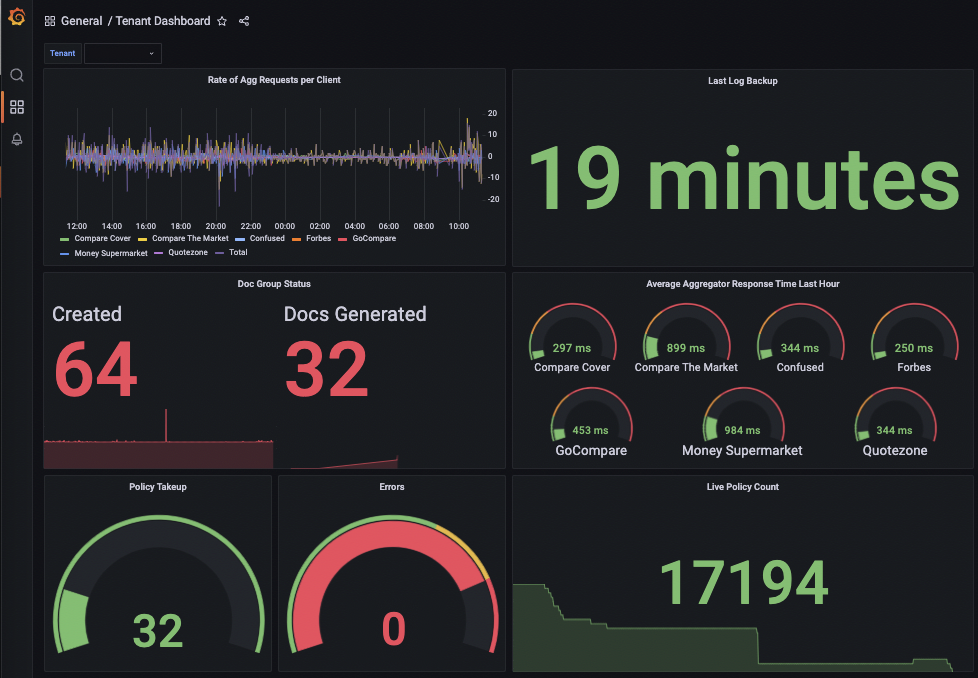
Analytics Team & Dashboards
In 2022 Ignite will be forming a dedicated analytics team to proactively bring data insights to our broker and insurer partners.
We will build upon our existing PowerBI and Grafana dashboard tools, and leverage access to Microsoft Machine Learning tools as part of our Microsoft Partner Company status.
We anticipate that this team will help our clients optimise workflows, increase new business and renewal take-up rates, and identify new product opportunities.
Other things
As usual, we’ll be running our monthly innovation days from which many great new roadmap ideas pop up. We’ll also be putting live 6-8 major brokers, and integrating the products of 6-8 major insurers. Big year? Sure.


